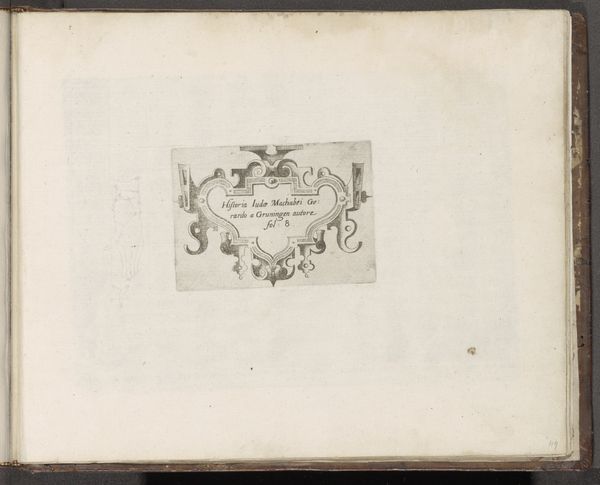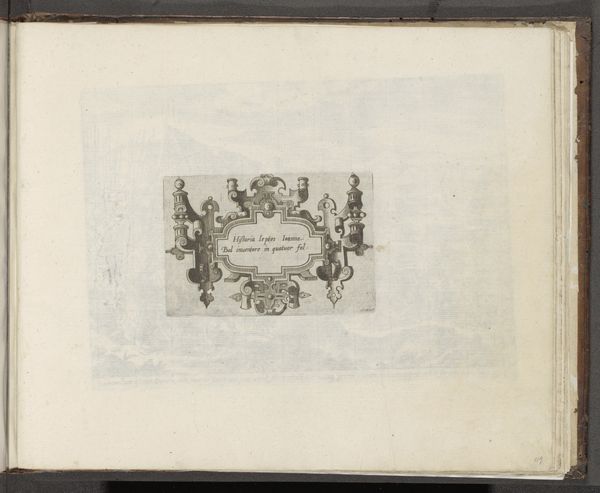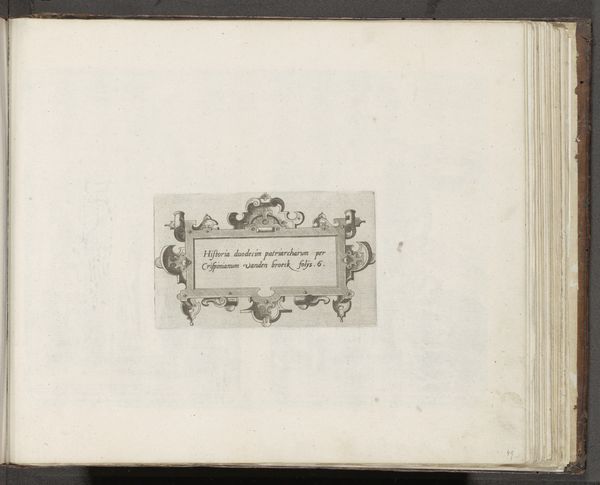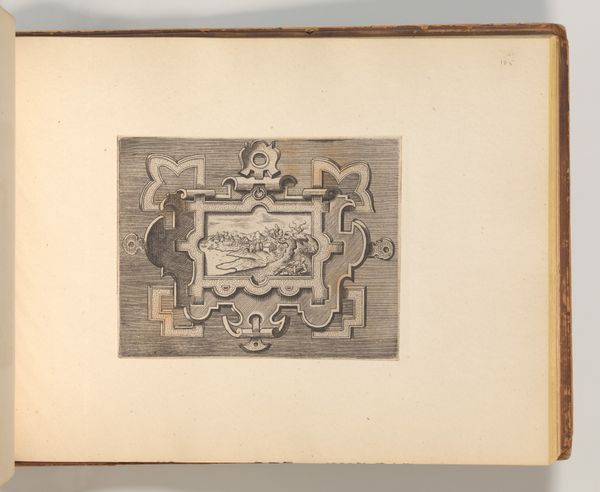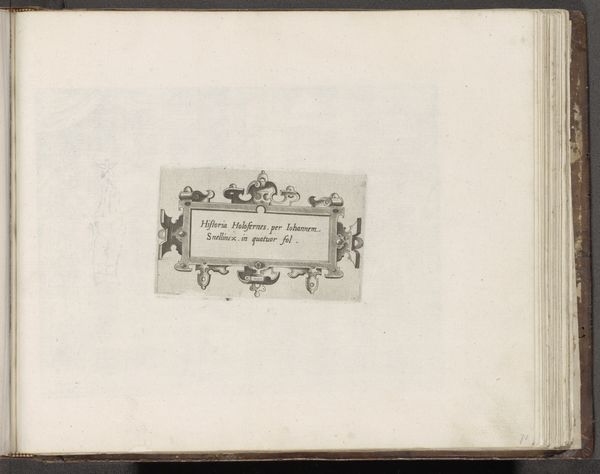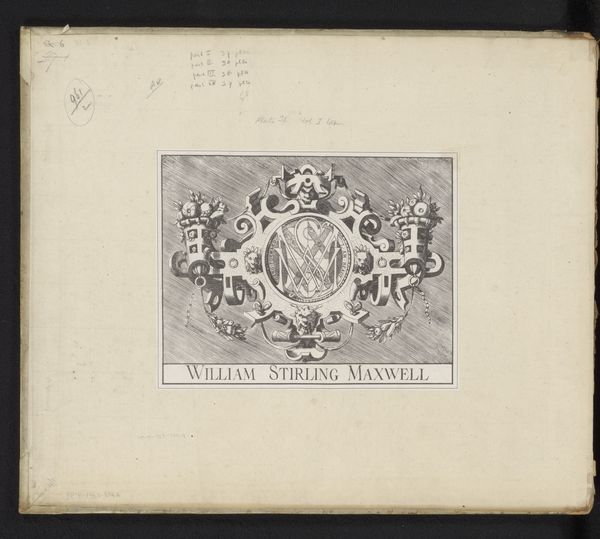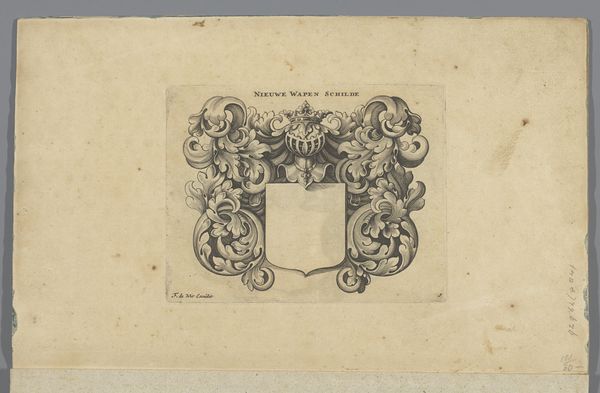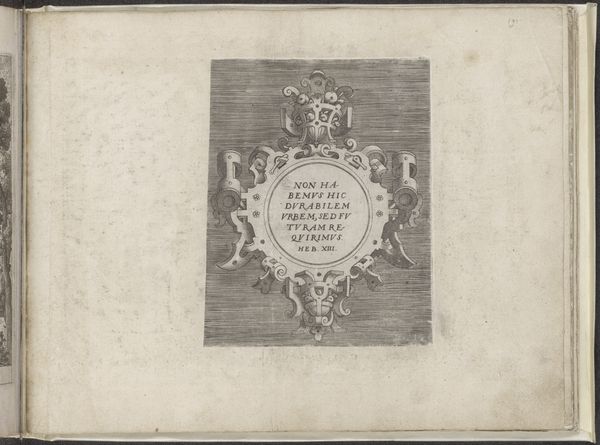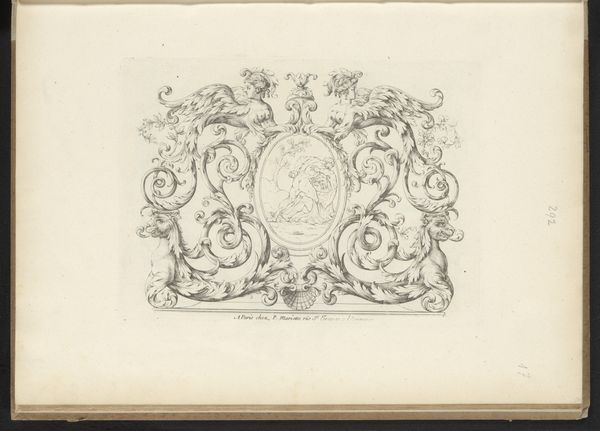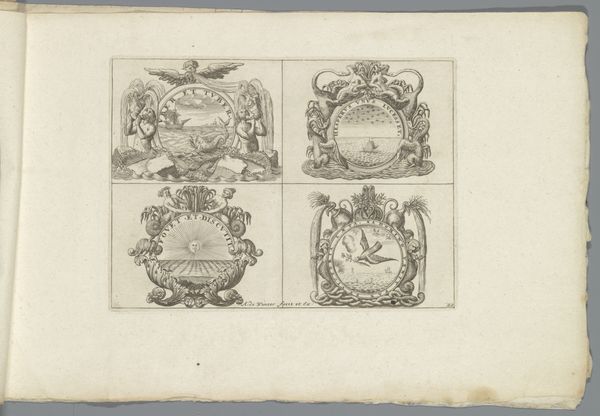
drawing, graphic-art, print, paper, ink, engraving
#
drawing
#
graphic-art
# print
#
mannerism
#
paper
#
ink
#
engraving
Dimensions: height 96 mm, width 124 mm
Copyright: Rijks Museum: Open Domain
Curator: Look at this intriguing piece; an anonymous engraving from 1579 entitled "Cartouche met rolwerk", housed here at the Rijksmuseum. It's a paper print, rendered in ink. Editor: My first impression? A sense of contained chaos. All these swirling, decorative elements framing… emptiness. What was this originally meant to surround? Curator: Exactly! The cartouche, a frame, invites text or image. Here, it seems to hold an inscription referring to a story by Iohannem Bol, maybe concerning Noah’s Ark. The swirling "rolwerk" – that’s the scrollwork – reflects the Mannerist style’s love of complex ornamentation and distortion. Editor: Mannerism is really fascinating here. This framework both draws your eye in and obstructs it. What purpose do you believe those design choices serve? Is it pure aesthetic flourish, or does it gesture at how elite art acted as a visual code in 16th century Europe? Curator: A code indeed! It signals sophistication and learning, but also subtly communicates power through complex allegories accessible to a select few. Scrollwork, abstracted from architectural forms, suggests grandeur. I like to see it also connected to other cultural trends; maybe how maps or illuminated letters were designed. Editor: And consider its function – presumably as part of a book? To think of printed knowledge production happening in tandem with coded aristocratic status and humanist learning… Does the artist present knowledge as accessible or something requiring a deciphering? The ornament verges on abstraction; perhaps the meaning lies as much in the artistry as in any specific content? Curator: Certainly. This is a world where meaning wasn’t always explicitly stated; the viewer needed to be educated in iconography and symbolism. And "anonymous" underscores how these skilled artisans served broader ideological programs, whether tied to religious authority, wealthy families, or even a particular city's reputation. Editor: And for us, viewing this image centuries later, to understand its layers of context... to tease out the embedded power dynamics. It reminds me that encountering images means interpreting an incomplete story. Curator: Precisely! An echo of cultural memory rendered in ink. A memory not fully unveiled, even with our analysis.
Comments
No comments
Be the first to comment and join the conversation on the ultimate creative platform.
